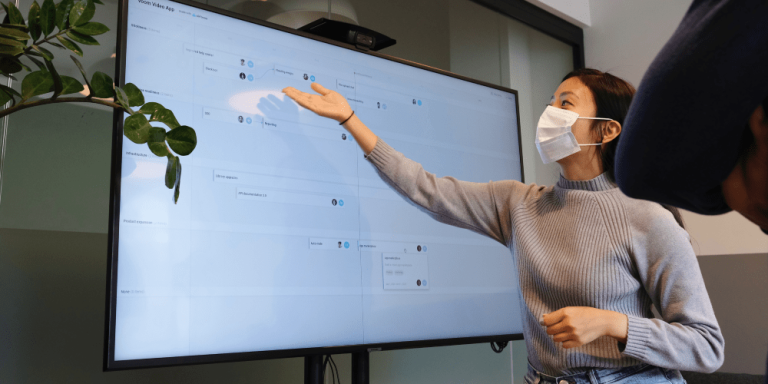There are three key areas HR should focus on in partnering with C-suite executives to create successful and sustainable business and digital transformation, according to a recent research report.
The first area is to build organisational agility and create a culture of speed and simplicity in order to cut through increasing levels of complexity.
“Organisations with a culture of always learning, innovating and adapting to changing circumstances, are more likely to succeed as they can move quickly and easily,” said the Leadership Connections 2017: HR driving business transformation report, which was conducted by Ipsos MORI and consulting firm Cirrus.
Developing agility remains a key goal for many C-suite leaders, and Asia Pacific MD of Cirrus, Alison Tickner, said HR can help by ensuring the organisation’s purpose is clear, resonant, and widely understood.
It is also helpful to prioritise ruthlessly and focus on one or two key goals, rather than trying to juggle multiple initiatives at once.
The second important area to focus on in digital transformation is middle managers in order to develop their confidence, capability, resilience and optimism to thrive through transformation and take others with them.
“Most transformation initiatives fail, however, there is a body of evidence to suggest that middle managers remain critical to success,” the report said.
“Offer easy access, high impact blended learning programmes that build capability in a sustainable way, and avoid what can be a layer of permafrost that inhibits change.
“Often senior leaders blame this level for transformation failure, even when they haven’t been equipped to deal with it.
“Aim to create a positive and optimistic culture to support this.”
“Achieving organisational excellence and transformation should be at the heart of HR’s work and focus”
The third important area to focus on in digital transformation is putting people at the heart of transformation, ahead of process and systems.
The report observed that many transformation initiatives are more focused on process and systems, rather than on actually engaging employees with change.
“It’s important to place your customer at the heart of your organisation, and to empower the people closest to your customers to meet their needs,” it said.
“By devolving decision-making to this level of the business, you can increase your customer centricity, competitiveness and drive performance.
“Today’s demanding customers are not prepared to wait for decisions to trickle down through a hierarchy, and today’s demanding employees want work to have meaning.”
Tickner explained that HR needs to fundamentally reshape itself so that the function becomes a critical driver of agility and a leader in digital transformation.
“When HR demonstrates agility, flexibility, and coordination, it unlocks high business performance throughout the organisation,” said Tickner.
“Achieving organisational excellence and transformation should be at the heart of HR’s work and focus.
“HR should lead the way in how organisations respond to the new world of work.”
Cirrus’ research has found that, statistically, having a believable and compelling vision is a vital component (sometimes called a meta-driver) of an employee’s engagement with an organisation, even more so than having a great line manager.
Data from Ipsos MORI, for example, has found that 60 per cent of employees believe that they receive a clear vision from their leaders about the future direction of the organisation, with roughly the same amount stating that they endorse that vision.
“The employee experience begins at the talent acquisition phase and the onboarding that follows”
The challenge, however, is in making that purpose more than a business statement and more of a cause, a purpose with higher meaning, a sense of making a real difference in the lives of customers and colleagues.
“This is a cause people can believe in, commit to, and derive a powerful sense of belonging from,” the report said.
“It engages them emotionally as well as rationally.”
Tickner noted that in building a long-term, sustainable future for businesses, people would rather work for a cause than an organisation – so HR should ensure the organisation is purpose driven to ensure true alignment.
“Empowerment and collaboration are key to becoming an agile organisation and leaders at all levels need to be developed accordingly,” said Tickner.
“We have to create an integrated employee experience to makes sense to all involved in our organisation.
“The employee experience begins at the talent acquisition phase and the onboarding that follows.
“If we get this wrong, they will not be engaged early on.
The employee journey then needs to make sense to them and meet their changing needs, according to Tickner, who said HR should assist the organisation in its structure and decision process to work cross-boundaries.
“Assist the organisation to build a culture of speed and simplicity,” she said.
“HR should lead the way in how organisations respond to the new world of work”
The report also noted that, perhaps unsurprisingly, the focus on the leadership skills during times of great change appear to have shifted from more traditional behaviours of decisiveness and persistence, to those requiring collaboration and agility.
However, the report found that this focus on collaboration now incorporates two concepts:
- The need for technology to support this behaviour: many of the respondents referenced the role that digitalisation has played in making collaboration easier, and the effect that not having the basics in place (such as wi-fi) has on stopping this behaviour.
- The definition of collaboration: is having an enterprise view of the organisation, ensuring that people are doing things that are good for the whole organisation, even at the short-term expense of their own area.
This requires having a broad view and understanding of all functions and operations of the organisation and how broader social, economic, technological, and political trends impact that.
Tickner explained that “connected leadership” is a new style of leadership that creates agile and collaborative organisations that can better respond to change.
“Leaders create shared purpose and devolve decision making across the organisation,” said Tickner.
“A connected leader is an authentic role mode, provides clarity, shares power, embeds collaboration and encourages ongoing learning.”
The report also observed that there is a disconnect between the CEO perspective on the need for business and digital transformation, and that of the HR community.
A Corporate Research Forum report suggested that HR’s role as an advisor on change and digital transformation is often lower than in many other areas of advice.
“Business alignment is the key thing that senior leaders want from their HR counterparts”
“This all suggests that HR has an opportunity to be more ambitious about its perception of, and role in, driving transformation,” the report said.
Irrespective of the type of change that is happening in an organisation, organisations need to become better at managing it.
The research found that although the clear majority (some 70 per cent) of employees understand the need for the changes in their organisation – and six out of ten support it – only half of employees think it is well managed.
“This indicates that there is significant work to do to bring employees along with the changes, involve them and make them feel it is a process done with them, not to them,” the report said.
“HR leaders need a transformational mindset and understand that nothing is going to stand still anymore and that change is constant,” said Tickner.
“HR should be able to impact and influence decisions at the table and link them to the strategy and business goals.
“Business alignment is the key thing that senior leaders want from their HR counterparts.”
Instead of pushing resources and people based on forecasted demand, Tickner said nimble organisations may instead fluidly enable a broad range of resources and people to be pulled on an as-needed basis to respond to events in real-time and where they will have the most impact in any digital transformation initiative.
“HR itself should be collaborative, agile and business informed,” she said.
“It needs to transform its strategy and operating model and ensure HR teams are capable to deal with technology, data and employee centric processes in essence put people at the heart of transformation.”
Click here for the full Leadership Connections 2017: HR driving business transformation report. Image source: iStock





